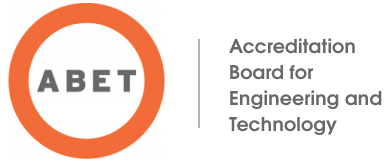Electrical Engineering Technology Program
All of the amazing electronic systems that everyone uses every day are made up of relatively few fundamental functional blocks. The EET program at Purdue will equip you to understand each of these functional blocks, know how they are implemented using the most current technology, and combine them into useful systems that meet the needs of people and industry. Within the program are a number of major options. The EET Major will prepare you for nearly any field that hires electrical engineers including biomedical, aerospace, automotive, power utilities, agriculture, heavy equipment, consumer products, wireless communications, and more. Other majors are available that provide greater levels of expertise in a particular field of electronics such as audio or energy.
The degree is Engineering Technology, the career is engineering.™
Accreditation
 ABET Engineering Technology Accreditation Commission: The Electrical Engineering Technology Program at Purdue University is accredited by the Engineering Technology Accreditation Commission of ABET, https://www.abet.org, under the commission’s general criteria and program criteria for Electrical/Electronic(s) Engineering Technology and similarly named programs.
ABET Engineering Technology Accreditation Commission: The Electrical Engineering Technology Program at Purdue University is accredited by the Engineering Technology Accreditation Commission of ABET, https://www.abet.org, under the commission’s general criteria and program criteria for Electrical/Electronic(s) Engineering Technology and similarly named programs.
Program Educational Objectives
EET Graduates two to five years into their careers:
- Work in fields of engineering or engineering technology and advance through career promotions.
- Solve complex problems, communicate solutions professionally, and adapt to changes, demonstrating effective performance in global, technological, or corporate environments and communities.
- Commit to lifelong learning, maintaining technical competence through continuous education and professional engagement.
Student Learning Outcomes
Graduates of the Bachelor of Science degree program in Electrical Engineering Technology will achieve the following learned capabilities:
- An ability to apply knowledge, techniques, skills and modern tools of mathematics, science, engineering, and technology to solve broadly-defined engineering problems.
- An ability to design systems, components, or processes meeting specified needs for broadly-defined engineering problems.
- An ability to apply written, oral, and graphical communication in broadly-defined technical and non-technical environments; and an ability to identify and use appropriate technical literature.
- An ability to conduct standard tests, measurements, and experiments and to analyze and interpret the results to improve processes.
- An ability to function effectively as a member as well as a leader on technical teams.
Enrollment Trends
| Fall 2018 | Fall 2019 | Fall 2020 | Fall 2021 | Fall 2022 | Fall 2023 | Fall 2024 | Fall 2025 | |
|---|---|---|---|---|---|---|---|---|
| West Lafayette | 248 | 237 | 270 | 314 | 353 | 386 | 372 | 314 |
| Columbus | - | - | - | - | - | 8 | 7 | 6 |
| Kokomo | 19 | 28 | 30 | 27 | 24 | 22 | 24 | 25 |
| New Albany | 40 | 33 | 31 | 31 | 22 | 26 | 27 | 38 |
| South Bend | 22 | 26 | 32 | 21 | 16 | 17 | 11 |
Number of Graduates
| 2018-2019 | 2019-2020 | 2020-2021 | 2021-2022 | 2022-2023 | 2023-2024 | |
|---|---|---|---|---|---|---|
| West Lafayette | 74 | 56 | 43 | 47 | 41 | 79 |
| Columbus | - | - | - | - | - | 0 |
| Kokomo | 2 | 3 | 5 | 4 | 7 | 4 |
| New Albany | 4 | 6 | 6 | 10 | 3 | 6 |
| South Bend | 6 | 5 | 3 | 5 | 5 | 5 |
Enrollment Trends and Number of Graduates data is sourced from Purdue’s Office of Enrollment Management's Data Digest.